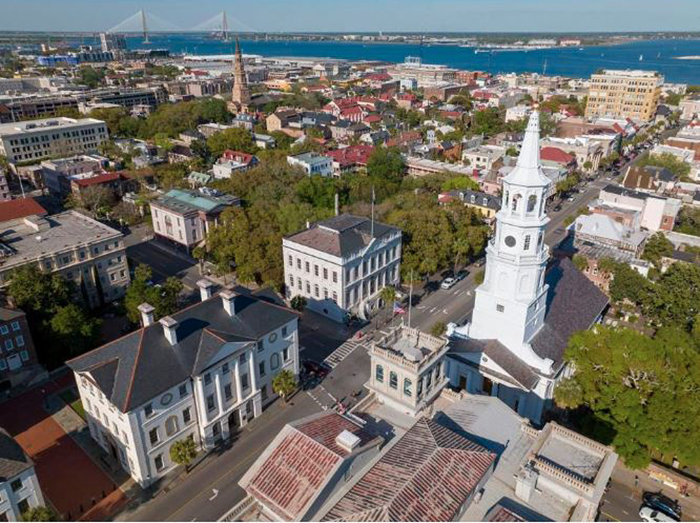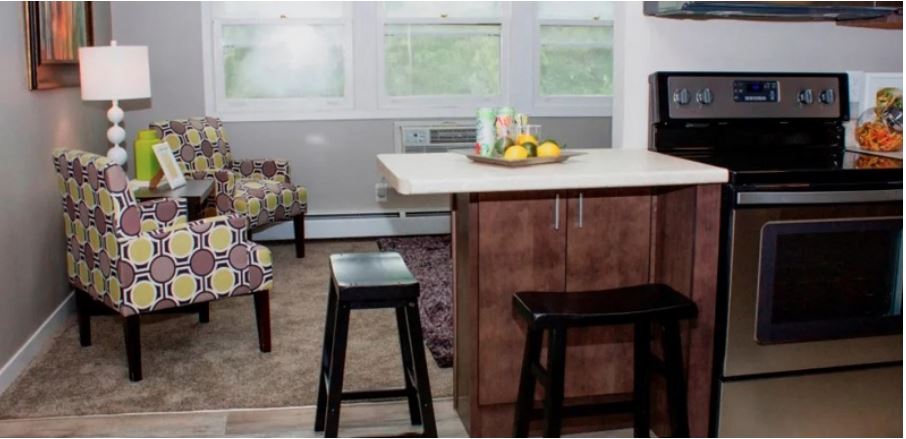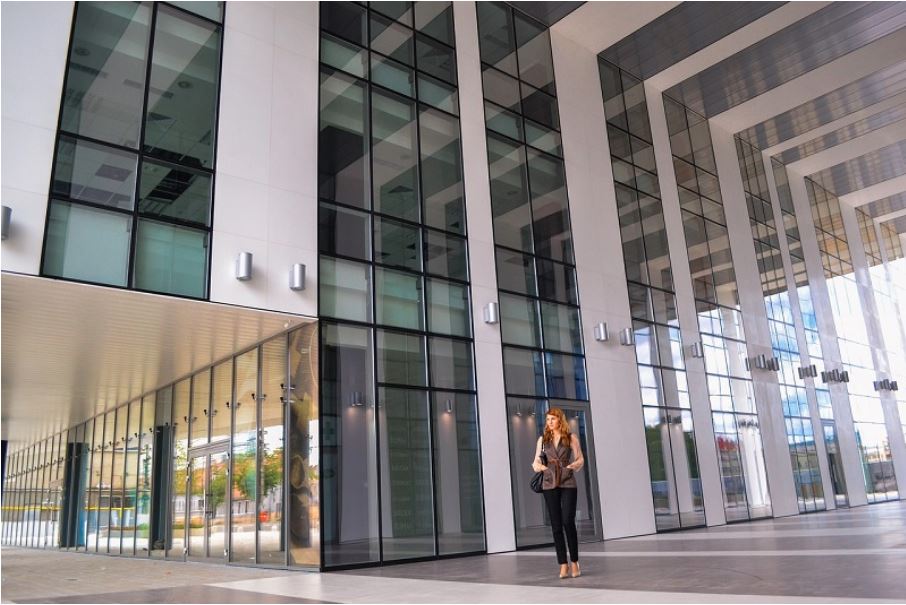In its efforts to curb rising inflation, the Federal Reserve on Sept. 21 raised its benchmark interest rate by three-quarters of a percentage point. The Fed also said that it plans to boost this rate in the future to fight inflation.
The Fed also said it will continue to enact hikes until its benchmark rate hits 4.6% in 2023.
This move, of course, sent another ripple of concern through the commercial real estate industry, with CRE professionals wondering how many commercial deals the higher interest rates might scuttle.
We spoke to commercial financing professionals about the Fed’s move and what it might mean for their business. The consensus? Expect a slowdown in activity as investors determine how best to operate in an environment of higher interest rates.
Chad Kiner, Managing Director, Walker & Dunlop, Columbus, Ohio
Let’s start by addressing the big question: What impact has rising interest rates had on the demand for commercial financing?
Chad Kiner: It has certainly impacted demand. Everything rolls downhill. You have the rising interest rates along with the higher costs of construction materials and labor. Everything has bubbled up to a point where it is now starting to affect the liquidity of banks and life insurance companies.
Last December was our first real taste of construction costs going up. But interest rates were still low at that point. When you add in the complexity of an environment in which rates are rising, the uncertainty of what tomorrow looks like, you start to see a pullback in liquidity.

Even with rising rates, are investors still interested in commercial real estate?
Kiner: Rising costs, rising rates and compressed cap rates are all the ingredients from an investor perspective in which you should stay away from real estate. But for the right asset classes, mainly multifamily and industrial, there is still a lot of investor appetite. There is uncertainty in the stock market, too. The stock market has performed poorly this year. That makes commercial real estate an investment opportunity that is still attractive.
From an institutional perspective, the funds, endowments and life insurance companies, real estate will remain a part of their portfolios. We see the appetite for those investment vehicles continuing to grow. It is sort of counterintuitive to what is happening in the market, but we still see a lot of appetite for investment dollars coming into the right asset classes.
Not all commercial real estate assets, though, are viewed as favorably by investors, especially today, right?
Kiner: Hotels, retail and certain portions of office are still looked at as very challenging asset classes today. We were starting to see more activity in these classes before interest rates started rising. We were seeing some capital shift into those sectors. But now that rates are rising, we are starting to see a slowdown again in investor activity in alternative sectors such as office, retail and hospitality.
Overall, though, multifamily and industrial remain very attractive investments. Those sectors are like a bond alternative. Multifamily today, even more than industrial, is viewed as an alternative to investing in bonds. It’s a coupon-clipper investment.
Taking a look at your own local market, how strong is financing activity in Columbus?
Kiner: We are fortunate to be in a market like Columbus. The population here is growing. We are the state capital. We have one of the top universities in the country. There are a multitude of industries here. We don’t rely on just one industry here.
The announcement by Intel that they are going to develop a $40 billion facility in Columbus is another plus. There will be a lot of growth spurred on by that Intel announcement that we weren’t expecting. People are moving here, which will create housing demand. Rents are growing on the multifamily side. Our single-family housing stock is always stressed. Columbus is like a blue-chip stock. We are never going to see our real estate activity rise as fast as it does in some of the southern cities. But in a downturn, we are steady-Eddie stable.
What are the most common types of financing requests that you are seeing today?
Kiner: Multifamily, mixed-use and industrial are the big three. We are doing a financing in Dayton, Ohio, right now. It’s a mixed-use project with a major multifamily component.
When you do receive a financing request, what factors do you consider when deciding whether to take it on?
Kiner: We look at the strength of the market and the strength of the sponsor. Where the property is located is much more important today. The old adage of “location, location, location” will never change. In down times, banks and lenders are also paying close attention to the strength of the sponsor. A lender today might be more likely to do a deal in Columbus because it is such a strong market. It has performed well over a long stretch of time. Lenders also look at where a market has been and where it is today. What is the job growth like?
When it comes to the sponsor, we’ll look at whether we’ve done business with the sponsor before. Can we trust them? What are their strengths? If something goes wrong, can they still write a check? Is the project they are bringing to us sustainable?
It’s difficult to predict, but what do you see in the near future when it comes to the demand for acquisition financing?
Kiner: There is going to be a lot more thoughtfulness from investors on where they want to put their money. We are going to see a lot more discernment. I think we’ll see a general pullback. Investors will still invest in real estate. What are the alternatives? But there will be some pullback as investors wait to see where rates will land.
Sam Miller, Senior Vice President, Bellwether Enterprise, Columbus, Ohio
Conor Lee, Sr Vice President, Bellwether Enterprise, Columbus, Ohio
How has the Fed’s latest hike in its benchmark interest rate impacted demand for commercial financing?
Sam Miller: Obviously, the Fed is going to continue to raise its rate. The Fed made it clear that its target is to get the benchmark rate to 4.6%. This is happening in real time right now, so everyone is feeling it. The rising rates are definitely slowing things down. The higher rates are making deals more challenging to close.
The saving grace for a lot of folks, especially in multifamily, is that rent growth has continued, too. That helps to absorb some of the shock from rising interest rates. The reality is that there is still a massive shortage of housing. There is a lot of demand for housing. And because of that, the demand for multifamily is growing, too, which means that owners can still grow their rents. That is helping to blunt some of the impact from interest rates.

Conor Lee: From a real estate perspective, supply and demand is still in great shape. There is a ton of demand for housing in general. The number of units being developed is not fulfilling that demand. Are there potential layoffs and a recession ahead of us? If so, we might see bad debt creep into collections. We might start seeing occupancy issues. People who are looking for one-bedroom apartments might start looking for two-bedrooms so that they can bunk up with roommates to lower their monthly costs.
Right now, we are still seeing multifamily assets performing well. But what does your capital stack look like? If you have a refinance event, if you have a certain debt load you are at, can you get out of that debt? Can you return equity to your investors? That is challenging when rates are high.
Does it look like multifamily is resilient enough to remain a good investment even during times of higher rates?
Miller: From a housing-market perspective, in some ways we are fortunate that it has been hard to build single-family housing for the last 10 years. When you look at the supply and what the vacant inventory was going into the great financial crisis of 2008 and 2009, it was so much more than it is today. There is not a huge glut of supply sitting there. Most people who own homes are possibly financed at 3.5% or lower. People don’t have to move now. If they don’t have to move, they won’t move. Why trade your 3.5% mortgage for a 6% mortgage? That further makes the case for multifamily. There are going to be more homes that don’t go on the market. That will increase demand for apartment units.
Are you seeing more multifamily supply coming on the market to help meet the high demand for it?
Lee: This is in flux right now. We are already seeing in Columbus developers pulling the plug on or pausing projects. That started because of the rising construction costs. Now with interest rates going up, that pause is going to continue. Couple construction costs with the cost of debt, that makes it more challenging to build anything. Construction lenders are starting to pull back. Underwriting metrics are more challenging. This environment is making it more difficult to get projects out of the ground.
I’ve asked others in the industry this, but even these rising rates are at historic low levels. Is there any acknowledgement of that in the commercial business?
Miller: We have been a little bit of doom-and-gloom here. At the end of the day, though, what is causing a lot of the pain right now is the uncertainty. A 3.75% 10-year treasury is not the end of the world. But expectations need time to reset. If we start to level off and find a place where the Fed stops raising rates and lets things take their natural course, I think everyone will feel better. Everyone will have to adjust, but they will do that. It’s just been a big change in a short period. I’m hopeful we will come out of it with a soft landing. It’s just difficult right now to know where the dominoes will fall.
Lee: Our strategy right now is to keep moving. We are trying to find ways to do deals. There is still a ton of capital out there. There are still a lot of debt providers in the market. As long as capital is still available, people will figure out how to do deals. If capital goes away, then we have a bigger problem.
We’ve talked a lot about multifamily. But how attractive of an investment is industrial real estate right now?
Miller: Industrial has a lot going for it. There is a massive need for more industrial product. From a development standpoint, though, industrial is a little trickier than multifamily. You might have one to three tenants in a typical industrial building. You are entering into long-term leases of five, seven or 10 years with these tenants. The challenge you’ve seen recently is with the increase in costs, both from construction costs that are rising and rising interest rates. You might agree to a 10-year lease with FedEx. You might have agreed to that lease in July, but you’re not able to build until October or November. Suddenly, you’re costs are up 10% because interest rates have gone up. Everything changes so fast now. That million dollars of profit that you were counting on as a builder might now be gone.
But from a fundamentals standpoint, there is still room for rent growth in industrial. The mechanics of getting deals built is changing. Everybody is going through that, but we are seeing it more in industrial.
What are you seeing right now in terms of deal velocity?
Lee: It is definitely slowing down. Things will slow. Velocity will slow. I don’t see how it doesn’t. But as long as capital is available, the market finds itself. We just need calmness. We can’t operate in this day-to-day volatile market. It’s hard to give guidance when things change so quickly.
Hal Collett, Chief Operating Officer, Agency Lending
Colliers Mortgage, Minneapolis
The big question is an obvious one: What impact will the Fed’s latest interest-rate hike have on the demand for commercial financing?
Hal Collett: The rate hike does make things more complicated. There are a lot of factors to consider. You have the rate environment and the Fed trying to catch up and curb inflation. The Fed was probably slow to react and is now trying to catch up, yet we are probably heading toward a recession now anyway. Then you have the general volatility in the economy. You have low cap rates and tremendous rent growth in the multifamily sector. The volatility with interest rates just adds more uncertainty to the commercial real estate market. Add in the geo-political risks and an election year, and you might see people put their pencils down for a while as they adjust.

At the same time, construction costs are rising. Does this increase the chances of a slow down in investment and development activity?
Collett: I think so. The rising construction costs and the delays in getting materials are contributing factors in slowing down development activity. People are more cautious about what they are going to do. Now the rate environment is increasing the cost of capital. That just adds more hurdles to getting deals done.









